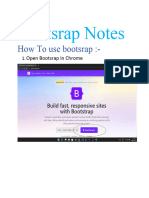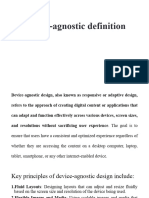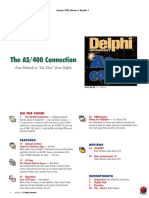0% found this document useful (0 votes)
92 views18 pagesBuild Scrolling Card UI with Flexbox & CSS Grid
This document discusses building a scrolling card UI using flexbox and CSS grid layout. It provides code snippets and explanations for the HTML, CSS, and layout approaches needed to create a responsive scrolling card component with snap scrolling behavior. The component displays cards in a horizontal layout that changes based on viewport width, with the number of visible cards adjusting from 1 to 4 across screen sizes. CSS properties like flexbox, grid, scroll snap, and custom scrollbars are used to achieve the desired interactive scrolling experience.
Uploaded by
Ishola Azeez olotoCopyright
© © All Rights Reserved
We take content rights seriously. If you suspect this is your content, claim it here.
Available Formats
Download as PDF, TXT or read online on Scribd
0% found this document useful (0 votes)
92 views18 pagesBuild Scrolling Card UI with Flexbox & CSS Grid
This document discusses building a scrolling card UI using flexbox and CSS grid layout. It provides code snippets and explanations for the HTML, CSS, and layout approaches needed to create a responsive scrolling card component with snap scrolling behavior. The component displays cards in a horizontal layout that changes based on viewport width, with the number of visible cards adjusting from 1 to 4 across screen sizes. CSS properties like flexbox, grid, scroll snap, and custom scrollbars are used to achieve the desired interactive scrolling experience.
Uploaded by
Ishola Azeez olotoCopyright
© © All Rights Reserved
We take content rights seriously. If you suspect this is your content, claim it here.
Available Formats
Download as PDF, TXT or read online on Scribd
/ 18





















































































